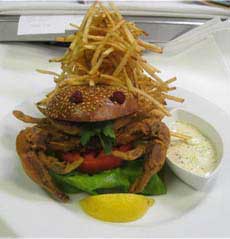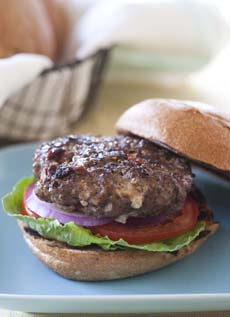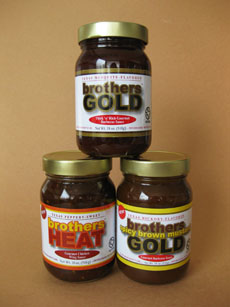|

Consume fewer pesticides: download the
pocket guide or app. Image courtesy
FoodNews.org.
|
|
We’ve previously written about the “Dirty Dozen” and the “Clean 15,” terms that refer to how much residual pesticide is left on produce, even after you wash and/or peel it.
With tempting seasonal produce entering the market, it’s time to revisit when it pays to buy organic produce.
Research has found that people who eat five fruits and vegetables a day from the Dirty Dozen list consume an average of 10 pesticides a day. Those who eat from the “Clean 15”—the 15 least contaminated conventionally-grown fruits and vegetables—ingest fewer than two pesticides daily.
The Shopper’s Guide To Pesticides, from the Environmental Working Group (EWG), is a key resource for consumers aiming to eat healthier. It helps us make informed choices in order to lower our dietary pesticide load.
|
There’s a downloadable pocket guide and iPhone app to help you avoid the Dirty Dozen—those conventional fruits and vegetables found to be highest in pesticides—and focus instead on the Clean Fifteen fruits and vegetables that are the lowest.
Download the guide or app.
The guide was developed based on data from nearly 89,000 tests for pesticide residues in produce examined between 2000 and 2008, collected by the U.S. Department of Agriculture and the U.S. Food and Drug Administration. You can find a detailed description of the criteria EWG used to develop these rankings and the complete list of tested fruits and vegetables at Foodnews.org.
In order of the amount of pesticide residue:
The Dirty Dozen (it’s worth paying for organic): celery, peaches, strawberries, apples blueberries, nectarines, bell pepers, spinach, cherries, kale/collard greens, potatoes and imported grapes.
The Clean 15 (no need to buy organic): onions, avocado, sweet corn, pineapple, mangos, sweet peas, asparagus, kiwi, cabbage, eggplant, cantaloupe, watermelon, grapefruit, sweet potato and honeydew melon.
You’ve been eating pesticides all your life. Why should you care about them now?
The growing consensus among scientists is that small doses of pesticides and other chemicals can cause lasting damage to human health, especially during fetal development and early childhood. Scientists now know enough about the long-term consequences of ingesting these powerful chemicals to advise that we minimize our consumption of pesticides.
What about washing and peeling the produce?
The data used by researchers is based on produce tested as it is typically eaten: washed, rinsed or peeled, depending on the type of produce. Rinsing reduces but does not eliminate pesticides. Peeling helps, but valuable nutrients often go down the drain with the skin. The best approach: eat a varied diet, rinse all produce and buy organic when possible.
|




